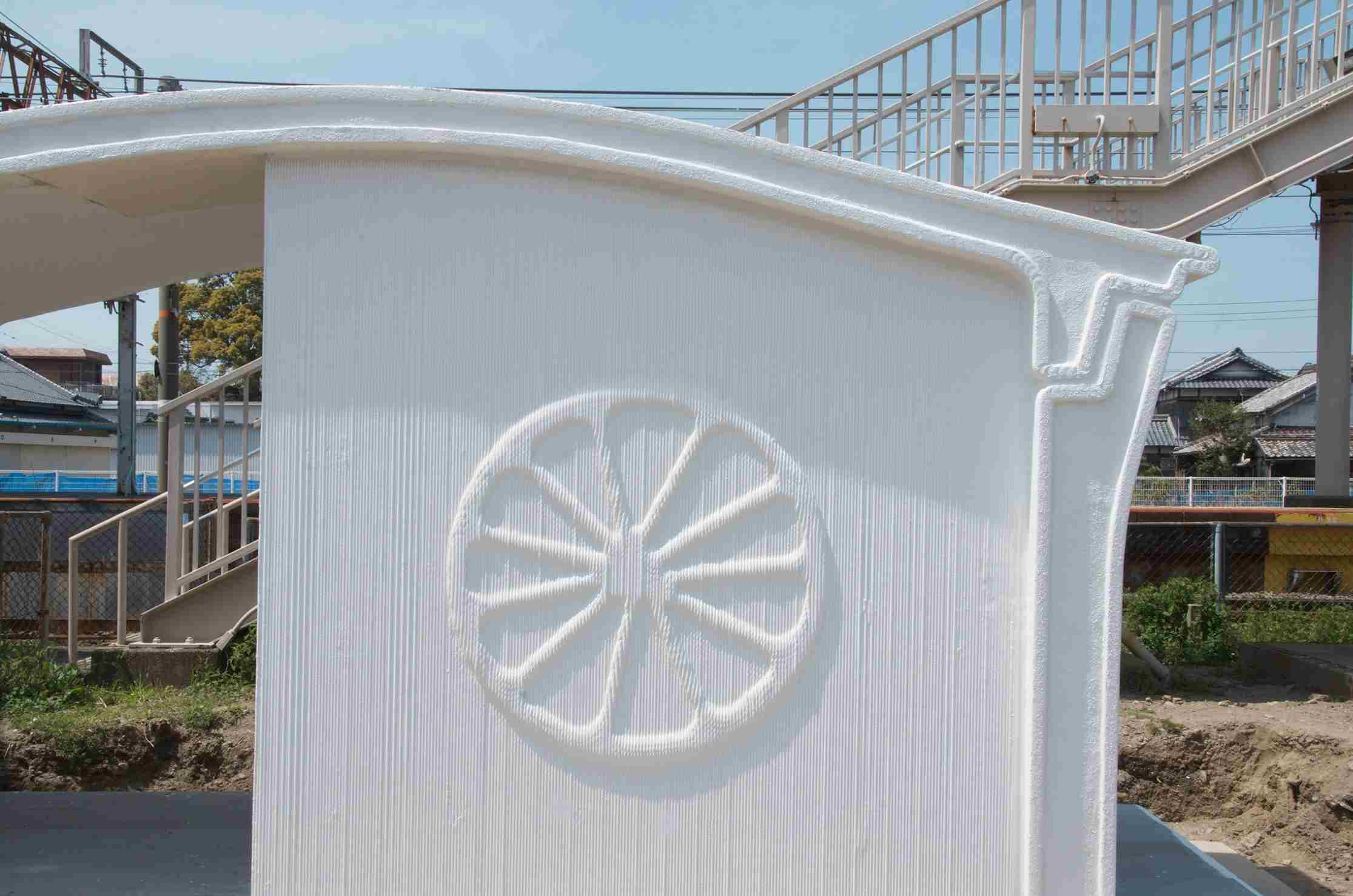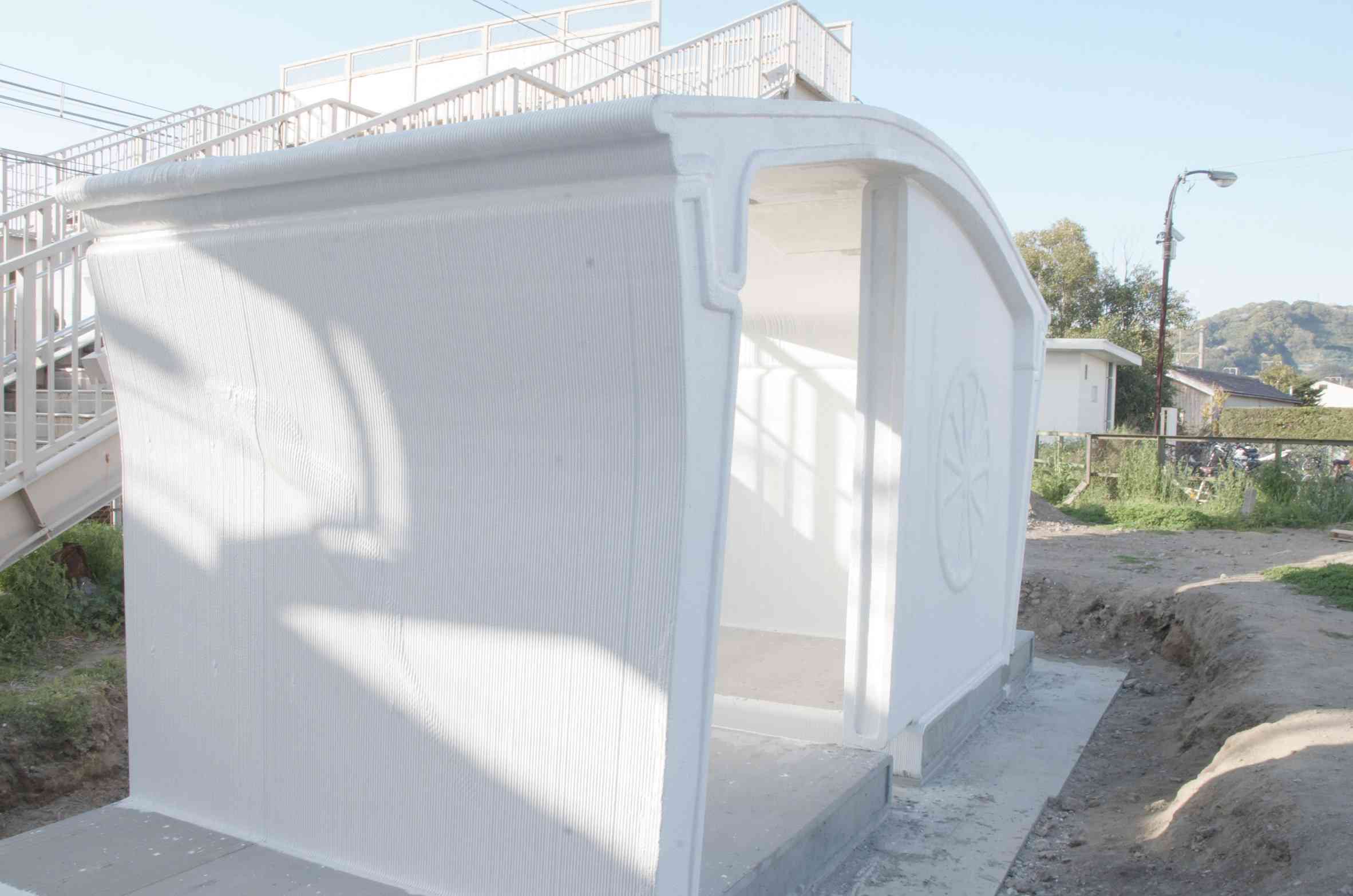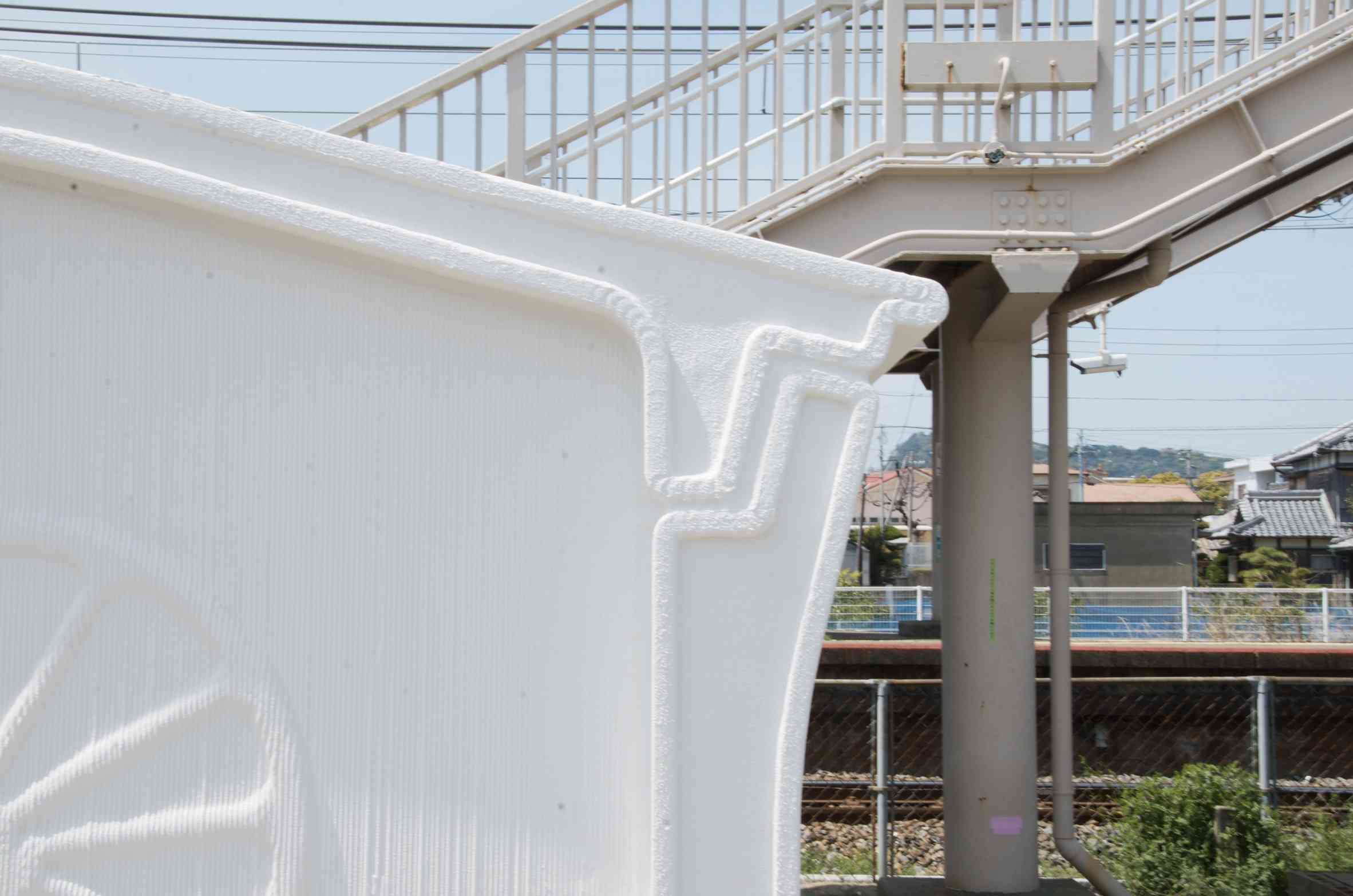
In a groundbreaking achievement for both the architecture and transportation sectors, Japanese company Serendix has completed what it claims is the world’s first 3D-printed railway station, located in Arida, Wakayama Prefecture. This innovative structure, designed in collaboration with JR West Japan Group and architecture firm Neuob, replaces a traditional wooden shelter built in 1948 at Hatsushima Station. SURFACES REPORTER (SR) sheds light on the new station which is not only a significant architectural milestone but also showcases how modern technology can revolutionize infrastructure with efficiency, sustainability and localized design.

Unlike traditional railway construction projects that take weeks or months, the entire station shelter was assembled in less than six hours, during the window between the last train of the day and the first service the following morning.
From Factory to Platform
The most remarkable aspect of the Hatsushima Station project lies in its construction timeline. Unlike traditional railway construction projects that take weeks or months, the entire station shelter was assembled in less than six hours, during the window between the last train of the day and the first service the following morning. This marks a paradigm shift in the way railway infrastructure can be delivered, minimizing disruption to passengers and maximizing efficiency.
The structure of Hatsushima Station was fabricated from four prefabricated 3D-printed components including a roof, a back wall and two corner pieces that form both the side walls and the floor. These components were produced over the course of seven days in a factory using a robotic arm and nozzle system, which deposited specially-formulated fast-drying mortar to form the shell. After printing, reinforcing steel bars (rebar) and traditional concrete were added to enhance the strength and structural integrity of each piece.

The structure of Hatsushima Station was fabricated from four prefabricated 3D-printed components including a roof, a back wall and two corner pieces that form both the side walls and the floor.
Once transported to the site, the assembly of the four components took just two hours, according to Serendix. Metal rods were used to anchor the elements through fixing holes, and adhesive was applied to ensure a secure connection. The resulting shelter measures 6.3m wide, 2.1m deep and 2.6m high, featuring an elegantly arched roof that adds a modern architectural touch while serving functional needs.
Revolutionizing Rail Infrastructure
The back wall of the shelter features 3D-printed reliefs of a mandarin orange and a cutlassfish, both symbols of Arida’s local culture and agricultural heritage. These decorative details were specifically chosen to reflect regional identity and demonstrate the design flexibility of 3D printing, particularly when it comes to curved surfaces and intricate patterns, elements that are typically expensive and complex to achieve with traditional formwork-based concrete construction.
What makes the Hatsushima Station project even more unique is the vertical printing technique used by Serendix. Unlike the common horizontal layering seen in most 3D-printed buildings, Serendix rotated the printing process by 90 degrees, creating vertical stripes that not only reduce the visibility of rain streaks but also enhance maintenance efficiency over time.

What makes the Hatsushima Station project even more unique is the vertical printing technique used by Serendix.
The station is reportedly expected to open for public use in July, following the completion of external landscaping and the installation of ticketing infrastructure. With this successful pilot, Serendix is optimistic about the future of 3D-printed stations across Japan. The company argues that its technique could dramatically reduce construction time and cost, especially in a country facing a severe labour shortage in the construction industry. While building a reinforced concrete station of similar scale would normally require one to two months, Serendix’s approach drastically cuts that timeframe.
Image credit: Serendix and Neuob